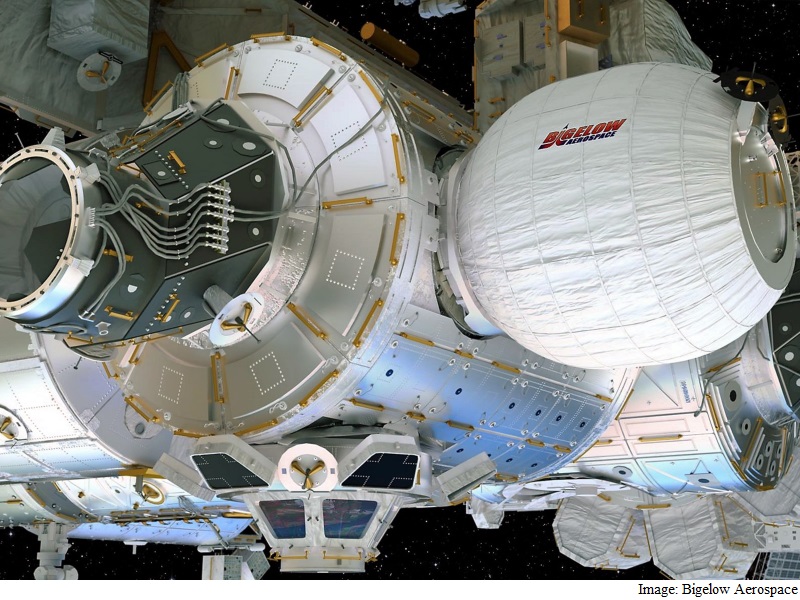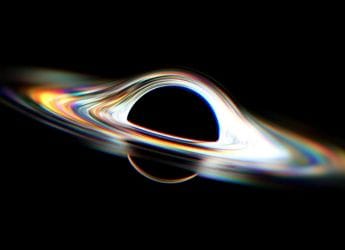- Home
- Science
- Science News
- Nasa's Jeff Williams to Step Into Expandable Space Habitat on Monday
Nasa's Jeff Williams to Step Into Expandable Space Habitat on Monday

Williams and the Nasa and Bigelow Aerospace teams working at Mission Control Center at Nasa's Johnson Space Center in Houston successfully deployed the expandable habitat - Bigelow Expandable Activity Module (BEAM) - at the International Space Station during more than seven hours of operations on May 28.
Expandable habitats are designed to take up less room when being launched but provide greater volume for living and working in space once expanded. This first test of an expandable module will allow investigators to gauge how well the habitat performs and specifically, how well it protects against solar radiation, space debris and the temperature extremes of space.
Williams' entry in the module will mark the beginning of a two-year data collection process, Nasa said.
He will take an air sample, place caps on the now closed ascent vent valves, install ducting to assist in BEAM's air circulation, retrieve deployment data sensors and manually open the tanks used for pressurisation to ensure all of the air has been released.
He will then install sensors over the following two days that will be used for the project's primary task of gathering data on how an expandable habitat performs in the thermal environment of space, and how it reacts to radiation, micrometeoroids, and orbital debris.
During BEAM's test period, the module typically will be closed off to the rest of the space station.
Astronauts will enter the module three to four times each year to collect temperature, pressure and radiation data, and to assess its structural condition.
As per the current plan, the module will be removed from the ISS after a monitoring period of two years and burn up on a re-entry into Earth's atmosphere.
It was launched on April 8 to the orbiting laboratory aboard a SpaceX Dragon cargo spacecraft from Cape Canaveral Air Force Station in Florida, and was was attached to the ISS's Tranquility module about a week later.
The module measured just over seven feet long and just under 7.75 feet in diametre in its packed configuration. BEAM now measures more than 13 feet long and about 10.5 feet in diametre to create 565 cubic feet of habitable volume, Nasa said in the statement on Friday.
Get your daily dose of tech news, reviews, and insights, in under 80 characters on Gadgets 360 Turbo. Connect with fellow tech lovers on our Forum. Follow us on X, Facebook, WhatsApp, Threads and Google News for instant updates. Catch all the action on our YouTube channel.
Related Stories
- Samsung Galaxy Unpacked 2025
- ChatGPT
- Redmi Note 14 Pro+
- iPhone 16
- Apple Vision Pro
- Oneplus 12
- OnePlus Nord CE 3 Lite 5G
- iPhone 13
- Xiaomi 14 Pro
- Oppo Find N3
- Tecno Spark Go (2023)
- Realme V30
- Best Phones Under 25000
- Samsung Galaxy S24 Series
- Cryptocurrency
- iQoo 12
- Samsung Galaxy S24 Ultra
- Giottus
- Samsung Galaxy Z Flip 5
- Apple 'Scary Fast'
- Housefull 5
- GoPro Hero 12 Black Review
- Invincible Season 2
- JioGlass
- HD Ready TV
- Laptop Under 50000
- Smartwatch Under 10000
- Latest Mobile Phones
- Compare Phones
- OnePlus 15R
- Realme Narzo 90x 5G
- Realme Narzo 90 5G
- Vivo S50 Pro Mini
- Vivo S50
- OPPO Reno 15c
- Redmi Note 15 5G
- Redmi Note 15 Pro 5G
- Asus ProArt P16
- MacBook Pro 14-inch (M5, 2025)
- Infinix Xpad Edge
- OnePlus Pad Go 2
- OnePlus Watch Lite
- Just Corseca Skywatch Pro
- Acerpure Nitro Z Series 100-inch QLED TV
- Samsung 43 Inch LED Ultra HD (4K) Smart TV (UA43UE81AFULXL)
- Asus ROG Ally
- Nintendo Switch Lite
- Haier 1.6 Ton 5 Star Inverter Split AC (HSU19G-MZAID5BN-INV)
- Haier 1.6 Ton 5 Star Inverter Split AC (HSU19G-MZAIM5BN-INV)

















